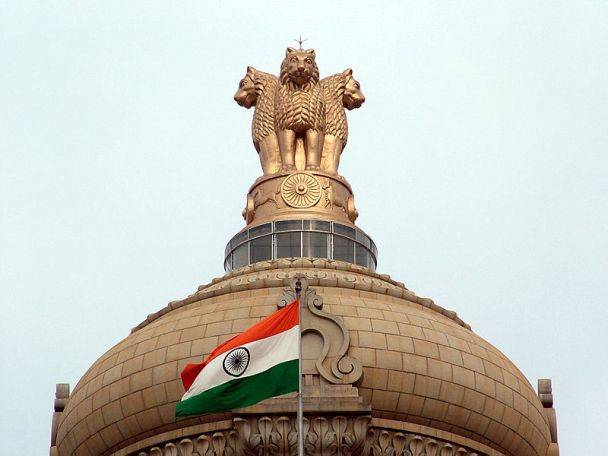The post below highlights the achievements of the Traditional Knowledge Digital Library or TKDL in the previous decade.
20 years ago, two patents pushed the Indian government into a full panic mode. These two patents were none other than the infamous Turmeric and Neem patents. In 1995, Suman K. Das and Hari Har P. Cohly were granted a US patent on ‘Use of Turmeric in Wound Healing’, and in the same year, WR Grace was granted a patent for neem-based bio pesticides. This forced the Indian government to pursue a decade long legal battle which it finally won. The entire episode acted as a wake-up call and thus paved way for an initiative known as TKDL or Traditional Knowledge Digital Library.
TKDL today has become both, an armor for the protection of traditional knowledge and a weapon against bio-piracy of such knowledge. The database has gathered applaud from all those nations that have rich and vast traditional practices and are often found victim to bio-piracy of TK.
This below table enlists some of the major milestones that the TKDL has observed over the last decade.
| Year | Major Events |
| 2005 | Request for access to TKDL by EPO |
| Initiation of project on TKDL Siddha | |
| Creating of TKRC containing approx. 25,000 subgroups | |
| 2006 | Request by United States Patent and Trademark Office(USPTO) for access to TKDL database |
| 2008 | Initiation of activities on creation of TKDL Yoga |
| 2009 | TKDL Access Agreement concluded with European Patent Office (EPO) |
| Request for access to TKDL by German Patent and Trademark Office (DPMA) | |
| TKDL Access Agreement concluded United States Patent Office (USPTO) | |
| Based on the TKDL evidences, application no. EP1607006 filed by Uniliver for “Functional berry composition”, was deemed to be withdrawn. | |
| 2010 | TKDL Access Agreement concluded with United Kingdom Intellectual Property Office(IPO) |
| Based on the TKDL evidences, application no. EP1660106 filed by Avesthagen for “Biotherapeutics for Mitigation of health Disorders from Terminalia Arjuna”, was deemed to be withdrawn. | |
| TKDL Access Agreement concluded with Canadian Intellectual Property Office (CIPO) | |
| 2011 | TKDL Access Agreement concluded with Intellectual Property Australia (IP Australia) |
| Based on the TKDL evidences filed for the application no. CA 2387703 entitled “Method for calming human beings using personal care compositions” by Johnson & Johnson Consumer Companies Inc, CIPO declared the application as ‘Dead’. | |
| Based on the TKDL evidences filed for the application no. CA 2579562 entitled “Method for improving sleep behaviors” by Johnson & Johnson Consumer Companies Inc, United States of America, CIPO declared the application as ‘Dead’. | |
| TKDL Access Agreement concluded with Japan Patent Office(JPO) | |
| Based on the TKDL evidences, application no. EP1553851 filed by L’Oreal for “Cosmetic composition for preventing and/or correcting the functional disorders of the pilo-sebaceous unit of mammals”, was deemed to be withdrawn. | |
| 2012 | Based on the TKDL evidences, Nestec had to withdraw their application no. EP2251029 for “Lactoferrin and gut neuronal health in adults and/or elderly.” |
| Colgate-Palmolive Company had to amend the claims of the publication no. EP2192910 entitled “Oral compositions containing botanical extracts” | |
| Based on the TKDL evidences, application no. EP2144591 filed by The Procter & Gamble Company for “Personal care compositions comprising an Antimicrobial Blend of essential oils or constituents thereof”, was withdrawn. | |
| Based on the TKDL evidences, application no. EP2139504 filed by Ranbaxy Laboratories Limited for “Standardized Bioactive Herbal Extracts”, was deemed to be withdrawn. | |
| Based on the TKDL evidences, application no. EP2157978 filed by BASF Beauty Care Solutions for “MC-1 R, MC-2 R, and MU Opioid Receptors Modulation”, was deemed to be withdrawn. | |
| 2013 | CGPDTM refused the application no. 1864/DEL/2006 entitled “A novel herbal composition and a process for preparation thereof effective against Diarrhaea and Dysentery” filed by Central Council for Research in Unani Medicines (CCRUM), India, based on the TKDL evidences. |
| CGPDTM refused the application no. 1313/DEL/2006 entitled “A preparation for the treatment of running and stuffy nose, productive or non-productive cough with or without fever and to a process for the preparation thereof” filed by Central Council for Research of Ayurveda and Siddha, India, based on the TKDL evidences. | |
| 2014 | Based on the TKDL evidences, application no. EP2293689 filed by Mars, Incorporated for “Food product”, was deemed to be withdrawn. |
| TKDL Access Agreement with Chile Patent Office (INAPI) | |
| 2015 |
Based on the TKDL evidences, application no. EP2689806 filed by the Colgate-Palmolive Company for “Oral compositions containing extracts of myristica fragrans and related methods”, was cancelled. |
| BASF Beauty Care Solutions had to amend the claims of the publication no. EP2157966 for “MC-1R, MC-2R, AND/OR [mu] OPIOID RECEPTORS STIMULATION” based on the TKDL evidences. |
What needs to be observed from the table is that TKDL is not an initiative against the west or anything on the likes. It is instead an impartial resource whose only aim is to strike down those applications which simply describe old knowledge dressed in new claims. This is very evident from the fact that the CGPDTM has rejected several applications by Indian applicants, Research organizations, to name a few. The complete list of applications that have been successfully countered using TKDL is available here and the all of the major milestones that TKDL has seen over the years since its inception are available here.
Read Dr. Kalyan’s note on The Case of Indian Intellectual Property
Image Source/ Attribution- here, governed by Creative Commons License CC BY 3.0



